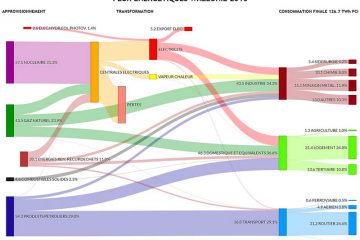Energy balance of the Brussels-Capital Region: wood energy vector and construction and renovation projects sector
Context
An energy balance is an accounting framework that allows an inventory to be made of all energy production, transformation and consumption flows over a geographical area (a country, for example) and a given period of time (a year, for example).

Source : Unsplash - Henry & Co.
Objectives
The two studies in this mission focus on acquiring missing information on wood energy and energy consumption in construction and renovation projects in order to improve the information in the Brussels energy balance and better meet international reporting requirements.
With regard to the wood study, the objective is to improve knowledge and balance figures relating to the following points:
- Local wood production: uses, local consumption, exports;
- Imports of wood energy;
- Consumption by form of wood energy: logs, firewood, pellets, charcoal, etc.;
- Consumption by sector;
- Consumption by use and type of technical installation.
With regard to the study on the construction/renovation sector, the objective is to improve knowledge and balance figures relating to the following points:
- Overall energy consumption for this activity;
- Consumption by energy vector concerned (electricity, diesel, others);
- Consumption by use: driving force used in situ, transport (materials, land, waste) within the perimeter of the Region, lighting, other possible uses;
- Consumption on-site versus consumption off-site (see transport);
- Consumption by type of building or infrastructure concerned.
Execution
The two studies were carried out using several methods: surveys (on a small scale: the wood consumption of restaurants, the production of wood by tree surgeons active in Brussels), estimates based on the results of studies in other countries (in the case of construction), estimates based on a simplified model of trade between Regions (for the production, export and import of wood). These methods made it possible to obtain more detailed estimates of wood energy and construction. A specific analysis was carried out to identify uncertainties and ways to improve the data at a later date.



















